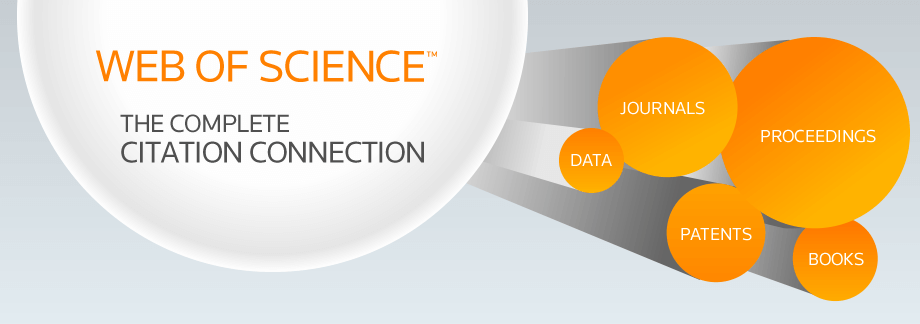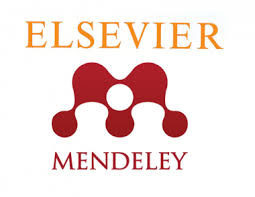INTERNATIONAL JOURNAL OF CREATIVE RESEARCH THOUGHTS - IJCRT (IJCRT.ORG)
International Peer Reviewed & Refereed Journals, Open Access Journal
IJCRT Peer-Reviewed (Refereed) Journal as Per New UGC Rules.
ISSN Approved Journal No: 2320-2882 | Impact factor: 7.97 | ESTD Year: 2013
Call For Paper - Volume 13 | Issue 11 | Month- November 2025
Scholarly open access journals, Peer-reviewed, and Refereed Journals, Impact factor 7.97 (Calculate by google scholar and Semantic Scholar | AI-Powered Research Tool) , Multidisciplinary, Monthly, Indexing in all major database & Metadata, Citation Generator, Digital Object Identifier(CrossRef DOI)
Contact Us Click Here
WhatsApp Contact Click Here
Volume 13 | Issue 4 |
| IJCRT Journal front page | IJCRT Journal Back Page |
Paper Title: Rail Tracks Defect Detection Using Deep Learning: A Review
Author Name(s): Gourav, Ruchi Patira
Published Paper ID: - IJCRT2504055
Register Paper ID - 281228
Publisher Journal Name: IJPUBLICATION, IJCRT
DOI Member ID: 10.6084/m9.doi.one.IJCRT2504055 and DOI :
Author Country : Indian Author, India, 122506 , Gurugram, 122506 , | Research Area: Science and Technology Published Paper URL: http://ijcrt.org/viewfull.php?&p_id=IJCRT2504055 Published Paper PDF: download.php?file=IJCRT2504055 Published Paper PDF: http://www.ijcrt.org/papers/IJCRT2504055.pdf
Your Paper Publication Details:
Title: RAIL TRACKS DEFECT DETECTION USING DEEP LEARNING: A REVIEW
DOI (Digital Object Identifier) :
Pubished in Volume: 13 | Issue: 4 | Year: April 2025
Publisher Name : IJCRT | www.ijcrt.org | ISSN : 2320-2882
Subject Area: Science and Technology
Author type: Indian Author
Pubished in Volume: 13
Issue: 4
Pages: a444-a447
Year: April 2025
Downloads: 146
E-ISSN Number: 2320-2882
Abstract
The safety and efficiency of railway transportation depend significantly on the integrity of rail tracks. Traditional methods of rail track defect detection are often time-consuming and prone to errors. With advancements in artificial intelligence, deep learning techniques have emerged as a powerful tool for automating defect detection, improving accuracy, and reducing maintenance costs. This paper presents a comprehensive review of deep learning-based approaches for rail track defect detection, highlighting various methodologies, datasets, and challenges in the field. Furthermore, it discusses real-world applications, potential improvements, and future research directions to enhance railway monitoring systems.
Licence: creative commons attribution 4.0
License
Keywords
Deep Learning, Artificial Intelligence, Accident, Neural Networks
License
Paper Title: REVOLUTIONARY RESCUE UNMANNED VEHICALE
Author Name(s): Prof. Ms. Shinde H. R, Mr. Bavche P. R, Mr. Mathapati V. S, Mr. Wagh T. P, Mr. More T. K
Published Paper ID: - IJCRT2504054
Register Paper ID - 281259
Publisher Journal Name: IJPUBLICATION, IJCRT
DOI Member ID: 10.6084/m9.doi.one.IJCRT2504054 and DOI :
Author Country : Indian Author, India, 413130 , pune, 413130 , | Research Area: Science and Technology Published Paper URL: http://ijcrt.org/viewfull.php?&p_id=IJCRT2504054 Published Paper PDF: download.php?file=IJCRT2504054 Published Paper PDF: http://www.ijcrt.org/papers/IJCRT2504054.pdf
Your Paper Publication Details:
Title: REVOLUTIONARY RESCUE UNMANNED VEHICALE
DOI (Digital Object Identifier) :
Pubished in Volume: 13 | Issue: 4 | Year: April 2025
Publisher Name : IJCRT | www.ijcrt.org | ISSN : 2320-2882
Subject Area: Science and Technology
Author type: Indian Author
Pubished in Volume: 13
Issue: 4
Pages: a441-a443
Year: April 2025
Downloads: 133
E-ISSN Number: 2320-2882
Abstract
The monitoring Spy The goal of the robot project is to create a mobile robot that can navigate indoor spaces on its own and carry out a variety of security and surveillance-related duties. Real-time video data transmission, obstacle detection, and remote operator communication should all be possible for the robot. The robot ought to be resilient, stealthy, and situation-and scenario-adaptable. The project intends to show that employing robots for security and surveillance purposes in a variety of fields, including the military, law enforcement, industry, and the home, is both feasible and promising. The primary objective of the suggested system is to offer an economical and efficient solution for missions involving surveillance and reconnaissance. There are numerous applications for the robot, including journalism, security, intelligence, law enforcement, and the military. The robot can gather important data covertly and enter areas that are hazardous or challenging for people to access. The robot may also sneakily interact with the environment or the victim, and if needed, it can flee or destroy itself. By offering a remote-controlled, safe, and effective way to rescue injured persons, the Revolutionary Rescue Unmanned Vehicle seeks to transform emergency response and wartime situations. Because of its ability to manoeuvre over challenging and dangerous terrain, this autonomous vehicle can remove wounded soldiers from combat areas without endangering other human rescuers. Its sophisticated sensors, cameras, and communication devices allow for accurate mane variability and real-time operator feedback, guaranteeing efficient navigation and prompt rescue operations.
Licence: creative commons attribution 4.0
License
Keywords
SPY Robot, Sensor, Bluetooth, Motor
License
Paper Title: A Study On Perception Of Zudios Brand Image Among Customers At Coimbatore City
Author Name(s): Dr. V. Sengani, R. sheeba
Published Paper ID: - IJCRT2504053
Register Paper ID - 280984
Publisher Journal Name: IJPUBLICATION, IJCRT
DOI Member ID: 10.6084/m9.doi.one.IJCRT2504053 and DOI :
Author Country : Indian Author, India, 641005 , coimbatore, 641005 , | Research Area: Commerce All Published Paper URL: http://ijcrt.org/viewfull.php?&p_id=IJCRT2504053 Published Paper PDF: download.php?file=IJCRT2504053 Published Paper PDF: http://www.ijcrt.org/papers/IJCRT2504053.pdf
Your Paper Publication Details:
Title: A STUDY ON PERCEPTION OF ZUDIOS BRAND IMAGE AMONG CUSTOMERS AT COIMBATORE CITY
DOI (Digital Object Identifier) :
Pubished in Volume: 13 | Issue: 4 | Year: April 2025
Publisher Name : IJCRT | www.ijcrt.org | ISSN : 2320-2882
Subject Area: Commerce All
Author type: Indian Author
Pubished in Volume: 13
Issue: 4
Pages: a435-a440
Year: April 2025
Downloads: 275
E-ISSN Number: 2320-2882
Abstract
This study examines how Coimbatore City consumers view Zudio's brand image by examining the variables that affect consumer loyalty, brand awareness, and purchase behaviour. Zudio, a quickly expanding retail brand owned by Tata Trent Limited, provides stylish, reasonably priced clothing to a wide range of customer demographics. This study investigates consumer preferences, brand comparisons, and purchasing reasons using a structured survey. Although issues like product availability, customer service effectiveness, and rivalry from companies like Max and H&M still exist, research indicates that Zudio's appeal is largely driven by its affordable prices and stylish designs. In a competitive fashion retail environment, the study offers suggestions for strengthening brand loyalty, improving customer experience, and improving Zudio's brand positioning. Fast-fashion company Zudio, owned by Tata Trent Limited, has grown quickly thanks to its stylish apparel and reasonable prices. Using a structured survey with 120 respondents, the study focuses on young urban consumers between the ages of 18 and 35. Brand perception, product quality, pricing, customer service, and rivalry from companies such as Max and H&M are among the important elements that are examined. The results show that although customer preference is influenced by pricing and trendy designs, issues like product availability, lengthy billing lines, and trial room accessibility have an effect on the entire shopping experience. Furthermore, the report emphasizes how sustainability and digital influence shape customer choices.
Licence: creative commons attribution 4.0
License
Keywords
In a competitive fashion retail environment, the study offers suggestions for strengthening brand loyalty, improving customer experience, and improving Zudio's brand positioning.
License
Paper Title: A Study on the Influence of Brand Image and Market Value on Customer Satisfaction in the Food Delivery Industry.
Author Name(s): Ms. Samiksha Avinash Pallod, Ms. Khushboo Vinodbhai Pandey, Prof. Vidhyalakshmi Narayanan
Published Paper ID: - IJCRT2504052
Register Paper ID - 281201
Publisher Journal Name: IJPUBLICATION, IJCRT
DOI Member ID: 10.6084/m9.doi.one.IJCRT2504052 and DOI :
Author Country : Indian Author, India, - , -, - , | Research Area: Science and Technology Published Paper URL: http://ijcrt.org/viewfull.php?&p_id=IJCRT2504052 Published Paper PDF: download.php?file=IJCRT2504052 Published Paper PDF: http://www.ijcrt.org/papers/IJCRT2504052.pdf
Your Paper Publication Details:
Title: A STUDY ON THE INFLUENCE OF BRAND IMAGE AND MARKET VALUE ON CUSTOMER SATISFACTION IN THE FOOD DELIVERY INDUSTRY.
DOI (Digital Object Identifier) :
Pubished in Volume: 13 | Issue: 4 | Year: April 2025
Publisher Name : IJCRT | www.ijcrt.org | ISSN : 2320-2882
Subject Area: Science and Technology
Author type: Indian Author
Pubished in Volume: 13
Issue: 4
Pages: a420-a434
Year: April 2025
Downloads: 128
E-ISSN Number: 2320-2882
Abstract
Customer satisfaction has become a critical factor in business success as competition in the food delivery industry has increased. While service quality and pricing have been thoroughly researched, the impact of brand image and market value on customer satisfaction is largely unknown. This study looks into the impact of these characteristics, specifically how brand perception and financial stability affect consumer trust and loyalty. A descriptive research design was adopted, which combined primary and secondary data sources. Surveys, interviews, and focus groups were used to acquire customer insights, with industry publications providing further context. The data were examined using regression and moderation analysis to determine the relationship between brand image, market value, and customer satisfaction. The findings show that a strong brand image considerably improves customer happiness, while market value is critical in reinforcing customer trust. Furthermore, market value was discovered to regulate the association between brand image and satisfaction, emphasising its importance in driving consumer behaviour. This study adds to the literature by including financial stability as an important element in consumer decision-making. To increase client trust, firms can work on developing a strong brand presence and implementing transparent financial processes. Future research should look at these relationships across different market groups and assess the influence of sustainability initiatives in brand perception.
Licence: creative commons attribution 4.0
License
Keywords
Brand image, market value, customer satisfaction, consumer trust, financial stability, the food delivery industry, business growth, market positioning, and consumer loyalty
License
Paper Title: Genage Detector Predictive Fractal Analysis of Human Traits
Author Name(s): Mrs. CH. Sri Divya, Mr. SVS Kumar Surisetty, Tiguti Harinaga Priyanka, Veera Venkata Lakshmi Sai Harshitha Grandhi, Kumhar Santosh , Nukatattu Durga Devi
Published Paper ID: - IJCRT2504051
Register Paper ID - 281060
Publisher Journal Name: IJPUBLICATION, IJCRT
DOI Member ID: 10.6084/m9.doi.one.IJCRT2504051 and DOI :
Author Country : Indian Author, India, - , -, - , | Research Area: Science and Technology Published Paper URL: http://ijcrt.org/viewfull.php?&p_id=IJCRT2504051 Published Paper PDF: download.php?file=IJCRT2504051 Published Paper PDF: http://www.ijcrt.org/papers/IJCRT2504051.pdf
Your Paper Publication Details:
Title: GENAGE DETECTOR PREDICTIVE FRACTAL ANALYSIS OF HUMAN TRAITS
DOI (Digital Object Identifier) :
Pubished in Volume: 13 | Issue: 4 | Year: April 2025
Publisher Name : IJCRT | www.ijcrt.org | ISSN : 2320-2882
Subject Area: Science and Technology
Author type: Indian Author
Pubished in Volume: 13
Issue: 4
Pages: a413-a419
Year: April 2025
Downloads: 126
E-ISSN Number: 2320-2882
Abstract
Through machine learning and computer vision the Genage Detector uses advanced technology to forecast human characteristics based on image pictures. The deep learning system uses large dataset training models to generate precise outcomes. Both administrative and end-user modes let users access the system easily while the internal database tracks user behavior and stored trait predictions for research purposes. The Genage Detector shows output right after video processing happens. This report explains what the project aims to achieve and details its technical capabilities to serve different industries including marketing, health and security fields. The Genage Detector breakthrough technology analyzes human features by reading video footage. People should have better ways to handle digital image and video content since this data type reduces daily. Using advanced facial image analysis Genage Detector enhances user experience and creates new ways to use its age-gender prediction data. The Genage Detector serves as an effective and dependable technology for detecting people's age and gender. The app uses advanced deep learning models to handle images instantly as it returns exact and useful outcome data. The technology gives useful information to marketers for personalized campaigns and helps doctors understand patient health risks through age-based analysis.The Genage Detector puts user needs first because it creates a basic system that lets you add new pictures or pick live video streams for analysis. Through its full backend system the Genage Detector records and stores user actions while keeping track of predicted traits to enhance future prediction accuracy.
Licence: creative commons attribution 4.0
License
Keywords
Genage Detector, Machine Learning, Computer Vision, Future Prediction Accuracy.
License
Paper Title: Inkcheck & Auth: Signature Fraud Detection Using Deep Learning
Author Name(s): Mr. M .VeeraBabu, Mr. M S V V Ramesh, Madiki Belishia Rani, Devarakonda Vyasa Vamsi Vardhan, Kunche Rashmi
Published Paper ID: - IJCRT2504050
Register Paper ID - 281054
Publisher Journal Name: IJPUBLICATION, IJCRT
DOI Member ID: 10.6084/m9.doi.one.IJCRT2504050 and DOI :
Author Country : Indian Author, India, - , -, - , | Research Area: Science and Technology Published Paper URL: http://ijcrt.org/viewfull.php?&p_id=IJCRT2504050 Published Paper PDF: download.php?file=IJCRT2504050 Published Paper PDF: http://www.ijcrt.org/papers/IJCRT2504050.pdf
Your Paper Publication Details:
Title: INKCHECK & AUTH: SIGNATURE FRAUD DETECTION USING DEEP LEARNING
DOI (Digital Object Identifier) :
Pubished in Volume: 13 | Issue: 4 | Year: April 2025
Publisher Name : IJCRT | www.ijcrt.org | ISSN : 2320-2882
Subject Area: Science and Technology
Author type: Indian Author
Pubished in Volume: 13
Issue: 4
Pages: a408-a412
Year: April 2025
Downloads: 138
E-ISSN Number: 2320-2882
Abstract
Companies need signature fraud detection systems to prove valid signatures on official documents across various industries. Fraudulent signatures harm many different sectors by causing damage to finances and creating identity theft problems along with legal problems. Forensic experts who check signatures by hand take too long and produce results that depend on their own feelings and mistakes. Digital platforms need an automatic security system that accurately spots fake signatures because of growing document threats and rising electronic transactions. This project creates a system that uses CNNs to identify irregular signatures through deep learning technology. CNNs show remarkable results when classifying images which make them good at differentiating real signatures from frauds. The application runs on the web through a Flask framework and lets users add signature images for evaluation. The deep learning model needs processed images first which means the system prepares the images by adjusting their size and quality while removing noise for optimal performance. Our model works with diverse data to examine signature images and inform users if their input is an original or a fake. This system working model fits different industries including bank, law, business security, and official government use as they all depend on accurate signature verification. Using advanced machine learning helps our system identify signatures better which reduces document fraud risk and creates a reliable solution for organizations that need secure verification. The system can develop additional security features by adding electronic signature tracking alongside multiple security checks and block chain network connections.
Licence: creative commons attribution 4.0
License
Keywords
Fraudulent Signatures, Flask Framework, Machine Learning, Deep Learning Model, Block Chain.
License
Paper Title: SAM: A Versatile Adaptive -Virtual Assistant for Everyday Applications
Author Name(s): Mr. SVS Kumar Surisetty, Mr. M S V V Ramesh, Penkey Siva Sandeep, Vaddi Deepika, Masa Nanda Kishore , Alavala Deepika
Published Paper ID: - IJCRT2504049
Register Paper ID - 281056
Publisher Journal Name: IJPUBLICATION, IJCRT
DOI Member ID: 10.6084/m9.doi.one.IJCRT2504049 and DOI :
Author Country : Indian Author, India, - , -, - , | Research Area: Science and Technology Published Paper URL: http://ijcrt.org/viewfull.php?&p_id=IJCRT2504049 Published Paper PDF: download.php?file=IJCRT2504049 Published Paper PDF: http://www.ijcrt.org/papers/IJCRT2504049.pdf
Your Paper Publication Details:
Title: SAM: A VERSATILE ADAPTIVE -VIRTUAL ASSISTANT FOR EVERYDAY APPLICATIONS
DOI (Digital Object Identifier) :
Pubished in Volume: 13 | Issue: 4 | Year: April 2025
Publisher Name : IJCRT | www.ijcrt.org | ISSN : 2320-2882
Subject Area: Science and Technology
Author type: Indian Author
Pubished in Volume: 13
Issue: 4
Pages: a402-a407
Year: April 2025
Downloads: 127
E-ISSN Number: 2320-2882
Abstract
A state-of-the-art software application uses artificial intelligence to enable users to manage tasks and access information and control system functions by speaking commands. Through the integration of modern systems including speech recognition and natural language processing (NLP) and machine learning the assistant operates multiple functions that cover application launching as well as media playback and system parameter changes and immediate feedback about weather and battery indicators. The system works with Google Gemini APIs to generate smart responses and supports offline wake word detection which improves privacy features. The web-accessible interface of this assistant functions through Python Flask development leading to seamless cross-platform implementation. As a voice-operated solution this project serves to minimize human-computer interface complexities through hands-free command control for daily operations which makes it applicable at both personal and workplace environments. The tool offers multiple capabilities to schedule events and give users information while handling smart device interaction which leads to better user efficiency and ease. Through the combination of speech recognition along with machine learning algorithms and cloud technology the virtual assistant obtains knowledge from user dialogues so it can improve its solutions throughout time. This project responds to modern interface requirements by creating user-friendly technology systems that serve wider user groups. The assistant will provide functionality to execute concurrent tasks which lets users expect assistance for multiple requirements through a single interface. This document provides an overview of project goals and territory as well as motivation and identification of concerns followed by a review that examines present solutions connected to their weaknesses. The artificial intelligence system combines state-of-the-art natural language processing with machine learning to execute automation tasks and supply information in order to boost productivity. Users can expect personalized service from the system because it keeps high command understanding and execution accuracy during all interactions while tailoring itself to individual preferences. The project responds to the expanding necessity for teamwork that exists during the development of software. The assistant achieves smooth teamwork by integrating with version control systems which lets developers share code while conducting change reviews to support project-wide high-quality standards.
Licence: creative commons attribution 4.0
License
Keywords
Natural Language Processing (NLP), Machine Learning, Python Flask, Google Gemini.
License
Paper Title: SMART VISION ATTENDANCE SYSTEM
Author Name(s): Mrs. T. Tejasvi, Mr. M S V V Ramesh, Pithani Ganesh, Akkina Abhinaya Sri, Bayyana Jaswanth Venkat , Ayinapurapu Viswas
Published Paper ID: - IJCRT2504048
Register Paper ID - 281053
Publisher Journal Name: IJPUBLICATION, IJCRT
DOI Member ID: 10.6084/m9.doi.one.IJCRT2504048 and DOI :
Author Country : Indian Author, India, - , -, - , | Research Area: Science and Technology Published Paper URL: http://ijcrt.org/viewfull.php?&p_id=IJCRT2504048 Published Paper PDF: download.php?file=IJCRT2504048 Published Paper PDF: http://www.ijcrt.org/papers/IJCRT2504048.pdf
Your Paper Publication Details:
Title: SMART VISION ATTENDANCE SYSTEM
DOI (Digital Object Identifier) :
Pubished in Volume: 13 | Issue: 4 | Year: April 2025
Publisher Name : IJCRT | www.ijcrt.org | ISSN : 2320-2882
Subject Area: Science and Technology
Author type: Indian Author
Pubished in Volume: 13
Issue: 4
Pages: a398-a401
Year: April 2025
Downloads: 131
E-ISSN Number: 2320-2882
Abstract
It is a modern, user friendly application which is used for automation of attendance taking of departments, educational institutions and workplaces. It makes use of facial recognition technology correctly and recognizes and authenticates the id of individuals with no need to rely on the manual method of identification and verification, which is inefficient and inaccurate. By utilizing this system to keep track of attendance in real time and compiling a database in an intuitive interface, has been made possible. The primary purpose of the project is to increase productivity, lower administrative workload, and guarantee a solid attendance management process. Moreover, the system includes security features, data analysis tools and provides enlightening reports that allow administrators view attendance trends and ensure compliance. Using an automated solution such as this allows organizations to move efficiently, minimize the role of the human factor, and promote a more disciplined working environment. The purpose and scope of the system are explained in this document, together with the design methodology and a literature review showing its importance and the possibility of its utilization. The innovation of the FaceTrack AI based Attendance Management System is an automated approach of improving the existing process of attendance tracking in both educational as well as professional environment. It uses the facial recognition technology which assures accurate, secure and realtime attendance marking and removes the human errors and fraud entries which usually happens in manual marks. Advance machine learning models have been used in the system to detect and recognize the face effectively and also with a friendly web application for management purposes. It has significant features which are scalable and efficient such as biometric authentication, database integration and automated report generation. Moreover, data visualization tools found in an admin dashboard facilitate the ability to analyze the data insightfully, which equips the decision making processes with sound knowledge.
Licence: creative commons attribution 4.0
License
Keywords
Attendance Trends, Biometric Authentication, Automated Report Generation, FaceTrack.
License
Paper Title: DishGenie - Recipe Recommendation System using Deep Learning
Author Name(s): Mrs. K . Lakshmi Viveka, Mrs. T.Tejasvi, Tejaswini Koppada, Kadipina Neelima, Rejeti Kaushik, J. Jyothi Sri
Published Paper ID: - IJCRT2504047
Register Paper ID - 281057
Publisher Journal Name: IJPUBLICATION, IJCRT
DOI Member ID: 10.6084/m9.doi.one.IJCRT2504047 and DOI :
Author Country : Indian Author, India, - , -, - , | Research Area: Science and Technology Published Paper URL: http://ijcrt.org/viewfull.php?&p_id=IJCRT2504047 Published Paper PDF: download.php?file=IJCRT2504047 Published Paper PDF: http://www.ijcrt.org/papers/IJCRT2504047.pdf
Your Paper Publication Details:
Title: DISHGENIE - RECIPE RECOMMENDATION SYSTEM USING DEEP LEARNING
DOI (Digital Object Identifier) :
Pubished in Volume: 13 | Issue: 4 | Year: April 2025
Publisher Name : IJCRT | www.ijcrt.org | ISSN : 2320-2882
Subject Area: Science and Technology
Author type: Indian Author
Pubished in Volume: 13
Issue: 4
Pages: a392-a397
Year: April 2025
Downloads: 166
E-ISSN Number: 2320-2882
Abstract
Artificial intelligence together with deep learning technology has enabled the development of intelligent systems which reduce complexities in different daily life processes. The process of identifying suitable recipes for existing ingredients remains difficult for most people within the culinary domain. Users can benefit from this solution named "DishGenie - Recipe Recommendation System using Deep Learning" because it generates recipe recommendations from their provided ingredients. Having Convolutional Neural Networks (CNNs) and Natural Language Processing (NLP) as deep learning models allows the system to process textual data and recognize ingredients through images. Flask enables a user-friendly interface which allows people to enter ingredients to receive customized recipe recommendations and handle their personal recipe lists. The system combines structured database storage which verifies ingredients and maintains recipes alongside its operational functions. DishGenie implements artificial intelligence image identification with data-based recipe structuring coupled to an adaptive recommendation system that transforms eating experiences while reducing culinary waste through stimulated kitchen innovation. This document offers complete details about project development alongside its goals and actual influence on outcomes.The software system allows customization based on individual user food needs and recipes because it automatically adjusts to specific dietary rules and cooking abilities. The recommendation engine uses intelligence to evaluate ingredients for creating multiple recipes including standard daily meals together with sophisticated restaurant-style dishes. Supplementing features through external API integration allows users to access YouTube recipe videos along with nutritional details and substitute ingredients on the platform. The features at DishGenie enable users to select meals with knowledge while saving food and trying innovative cooking approaches.
Licence: creative commons attribution 4.0
License
Keywords
Artificial Intelligence, Deep Learning, DishGenie, Convolutional Neural Networks (CNNs).
License
Paper Title: OutPassify : Student Outpass management App
Author Name(s): Mrs. K. Lakshmi Viveka, Mrs. T. Tejasvi, Murakonda Charan Sai, Uttaravilli Aditya Vinay
Published Paper ID: - IJCRT2504046
Register Paper ID - 281062
Publisher Journal Name: IJPUBLICATION, IJCRT
DOI Member ID: 10.6084/m9.doi.one.IJCRT2504046 and DOI :
Author Country : Indian Author, India, - , -, - , | Research Area: Science and Technology Published Paper URL: http://ijcrt.org/viewfull.php?&p_id=IJCRT2504046 Published Paper PDF: download.php?file=IJCRT2504046 Published Paper PDF: http://www.ijcrt.org/papers/IJCRT2504046.pdf
Your Paper Publication Details:
Title: OUTPASSIFY : STUDENT OUTPASS MANAGEMENT APP
DOI (Digital Object Identifier) :
Pubished in Volume: 13 | Issue: 4 | Year: April 2025
Publisher Name : IJCRT | www.ijcrt.org | ISSN : 2320-2882
Subject Area: Science and Technology
Author type: Indian Author
Pubished in Volume: 13
Issue: 4
Pages: a386-a391
Year: April 2025
Downloads: 137
E-ISSN Number: 2320-2882
Abstract
Outpassify functions as a web and mobile application which optimizes the student outpass approval and request workflow within educational institutions. The traditional approach to acquiring out passes takes too much time due to manual processes thus making operations less efficient while creating substantial delays. As an application Outpassify works to digitize manual processes and automate outpass requests to provide enhanced transparency and security together with easier student and administrative access. Through its easy-to-use interface users can present outpass requests that include their cause for absence along with exit date and time. The service transfers submitted requests to administrative departments to complete approvals through an automated process. The system notifies students about their application status as well as provides live updates which minimize student questions and confusion related to the process. Outpassify employs extensive authentication systems that protect both user accessibility and maintain defense of information data. Security for the application is maintained by authentication processes which also produce digital records for improved monitoring while meeting compliance requirements. A digital log incorporates all approved and rejected requests in the system which facilitates better record-keeping for institutional administration analysis. Outpassify enhances outpass management operations due to its capability of streamlining documentation and cutting administrative workloads which results in more efficient processes. The cloud-based design enables broad usage across multiple devices which make it the right solution for educational institutions implementing contemporary permission management systems. The enhanced communication channel of Outpassify allows students to contact administrators in order to maintain timely and transparent processing of their requests. Through modern technology Outpassify delivers correct information without mistakes thus establishing a robust and dependable student permission management process.
Licence: creative commons attribution 4.0
License
Keywords
Outpassify , Institutional Administration Analysis, Administrative Workloads.
License
November 2025
Volume 13 | Issue 11
Last Date :
30-Nov-2025
Submit Manuscript Online Impact Factor: 7.97 Review Results : Within 02-03 Days Paper Publication : Within 02-03 Days

ISSN: 2320-2882 Impact Factor: 7.97 and ISSN APPROVED Journal Starting Year (ESTD) : 2013

ISSN: 2320-2882 Impact Factor: 7.97 and ISSN APPROVED Journal Starting Year (ESTD) : 2013

CONFERENCE PROPOSAL CONFERENCE PROCEEDINGS







































































